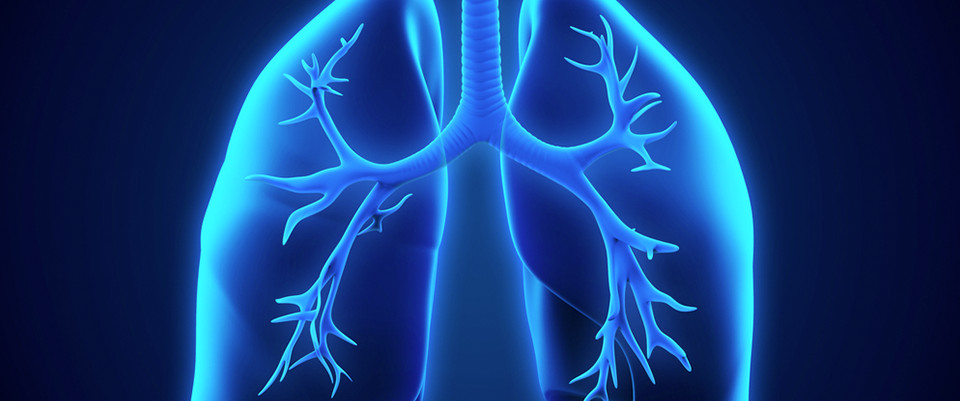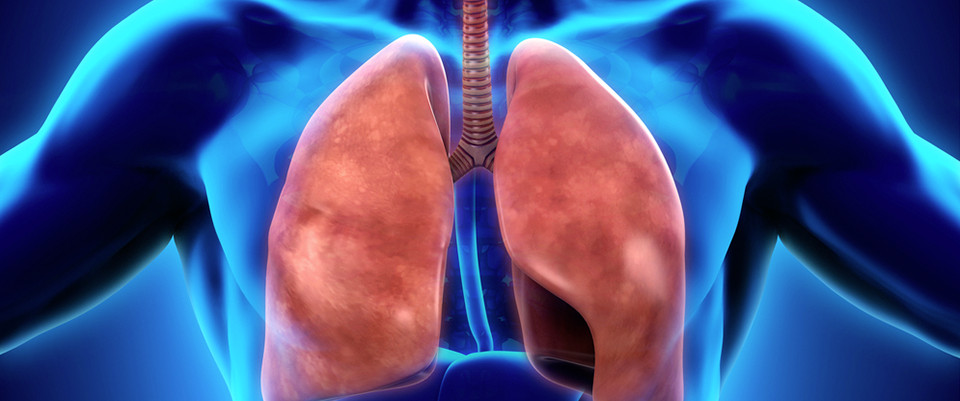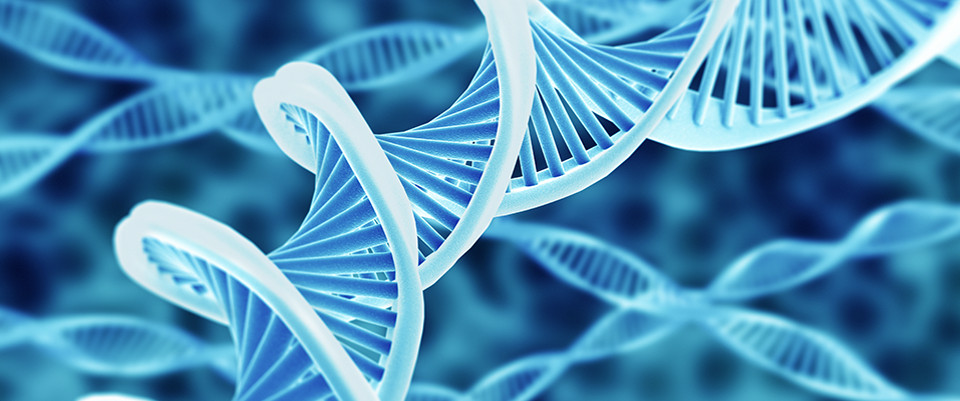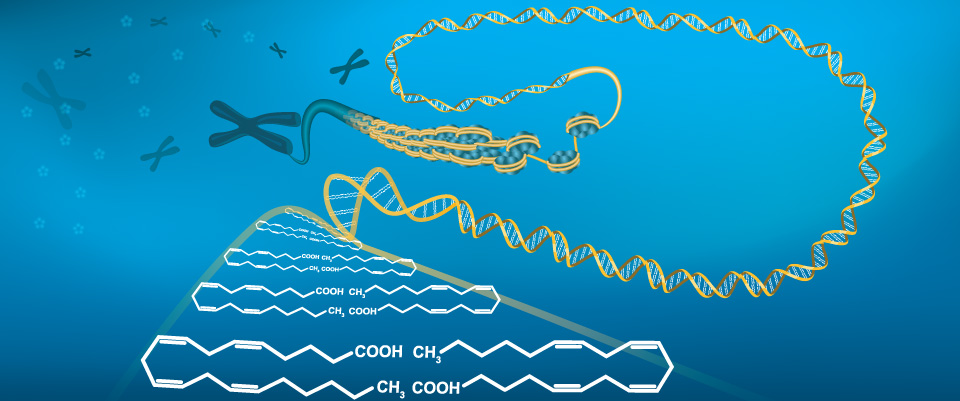PubMed
A Metabolomics Study on the Bone Protective Effects of a Lignan-Rich Fraction From Sambucus Williamsii Ramulus in Aged Rats.
Related Articles
A Metabolomics Study on the Bone Protective Effects of a Lignan-Rich Fraction From Sambucus Williamsii Ramulus in Aged Rats.
Front Pharmacol. 2018;9:932
Authors: Xiao HH, Sham TT, Chan CO, Li MH, Chen X, Wu QC, Mok DK, Yao XS, Wong MS
Abstract
The lignan-rich fraction (SWR) of Sambucus Williamsii Ramulus, a folk herbal medicine in China for treatment of bone diseases, has previously reported to exert protective effects on bone without exerting uterotrophic effects in ovariectomized (OVX) mice. The aim of the present study was to identify the potential metabolites and the associated metabolic pathways that contribute to the beneficial effects of SWR on bone in vivo. Aged female Sprague Dawley rats (9 months old) were either sham-operated or ovariectomized for 12 weeks, before receiving treatment for another 12 weeks with the following treatment groups (n = 12 each): vehicle (Sham), vehicle (OVX), Premarin (130 μg/kg) or low (57 mg/kg), medium (114 mg/kg), and high (228 mg/kg) doses of SWR. The results showed that SWRH significantly suppressed bone loss, improved bone micro-architecture and increased bone strength on tibia without stimulating uterus weight gain in OVX rats. Premarin exerted similar bone protective effects as SWRH but elicited uterotrophic effects in OVX rats. The metabolic profiles of serum samples were analyzed by using ultra-performance liquid chromatography quadrupole time-of flight mass spectrometry and gas chromatography time-of flight mass spectrometry, and the metabolites that were significantly altered were identified by multivariate statistical analysis. Our study indicated that SWRH effectively restored the changes of 26 metabolites induced by estrogen-deficiency in OVX rats, which related to lipids, amino acids, tryptophan metabolisms, and anti-oxidative system. A subsequent validation showed that the serum level of superoxide dismutase and catalase were indeed up-regulated, while the serotonin level in a tryptophan hydroxylase 1 (TPH1) high expressing cells (rats RBL-2H3 cells) was down regulated after treatment with SWR. The results also suggested that the gut-microbiota may play an important role on the bone protective effects of SWR. The current study provides insight for understanding the unique mechanism of actions of SWR that might be involved in achieving bone protective effects in vivo.
PMID: 30186170 [PubMed]
Analysis of the Metabolic Characteristics of Serum Samples in Patients With Multiple Myeloma.
Related Articles
Analysis of the Metabolic Characteristics of Serum Samples in Patients With Multiple Myeloma.
Front Pharmacol. 2018;9:884
Authors: Du H, Wang L, Liu B, Wang J, Su H, Zhang T, Huang Z
Abstract
Aims: This study aimed to identify potential, non-invasive biomarkers for diagnosis and monitoring of the progress in multiple myeloma (MM) patients. Methods: MM patients and age-matched healthy controls (HC) were recruited in Discovery phase and Validation phase, respectively. MM patients were segregated into active group (AG) and responding group (RG). Serum samples were collected were conducted to non-targeted metabolomics analyses. Metabolites which were significantly changed (SCMs) among groups were identified in Discovery phase and was validated in Validation phase. The signaling pathways of these SCMs were enriched. The ability of SCMs to discriminate among groups in Validation phase was analyzed through receiver operating characteristic curve. The correlations between SCMs and clinical features, between SCMs and survival period of MM patients were analyzed. Results: Total of 23 SCMs were identified in AG compared with HC both in Discovery phase and Validation phase. Those SCMs were significantly enriched in arginine and proline metabolism and glycerophospholipid metabolism. 4 SCMs had the discriminatory ability between MM patients and healthy controls in Validation phase. Moreover, 12 SCMs had the ability to discriminate between the AG patients and RG patients in Validation phase. 10 out of 12 SCMs correlated with advanced features of MM. Moreover, 8 out of 12 SCMs had the negative impact on the survival of MM. 5'-Methylthioadenosine may be the only independent prognostic factor in survival period of MM. Conclusion: 10 SCMs identified in our study, which correlated with advanced features of MM, could be potential, novel, non-invasive biomarkers for active disease in MM.
PMID: 30186161 [PubMed]
Identification of metabolic profiles associated with human exposure to perfluoroalkyl substances.
Related Articles
Identification of metabolic profiles associated with human exposure to perfluoroalkyl substances.
J Expo Sci Environ Epidemiol. 2018 Sep 05;:
Authors: Salihovic S, Fall T, Ganna A, Broeckling CD, Prenni JE, Hyötyläinen T, Kärrman A, Lind PM, Ingelsson E, Lind L
Abstract
Recent epidemiological studies suggest that human exposure to perfluoroalkyl substances (PFASs) may be associated with type 2 diabetes and other metabolic phenotypes. To gain further insights regarding PFASs exposure in humans, we here aimed to characterize the associations between different PFASs and the metabolome. In this cross-sectional study, we investigated 965 individuals from Sweden (all aged 70 years, 50% women) sampled in 2001-2004. PFASs were analyzed in plasma using isotope-dilution ultra-pressure liquid chromatography coupled to tandem mass spectrometry (UPLC-MS/MS). Non-target metabolomics profiling was performed in plasma using UPLC coupled to time-of-flight mass spectrometry (UPLC-QTOFMS) operated in positive electrospray mode. Multivariate linear regression analysis was used to investigate associations between circulating levels of PFASs and metabolites. In total, 15 metabolites, predominantly from lipid pathways, were associated with levels of PFASs following adjustment for sex, smoking, exercise habits, education, energy, and alcohol intake, after correction for multiple testing. Perfluorononanoic acid (PFNA) and perfluoroundecanoic acid (PFUnDA) were strongly associated with multiple glycerophosphocholines and fatty acids including docosapentaenoic acid (DPA) and docosahexaenoic acid (DHA). We also found that the different PFASs evaluated were associated with distinctive metabolic profiles, suggesting potentially different biochemical pathways in humans.
PMID: 30185940 [PubMed - as supplied by publisher]
Dormant Mycobacterium tuberculosis converts isoniazid to the active drug in a Wayne's model of dormancy.
Related Articles
Dormant Mycobacterium tuberculosis converts isoniazid to the active drug in a Wayne's model of dormancy.
J Antibiot (Tokyo). 2018 Sep 05;:
Authors: Raghunandanan S, Jose L, Kumar RA
Abstract
Isoniazid (INH) is one among the four first-line drugs used in the treatment of tuberculosis. The bactericidal activity of INH is due to its ability to inhibit mycolic acid synthesis, which is an integral component of the mycobacterial cell wall. Non-replicating Mycobacterium tuberculosis (MTB) is phenotypically resistant to INH. The exact mechanism of this resistance is not clear, although the inability of dormant MTB to convert the pro-drug into an active form is thought to be one of the possible reasons. Employing targeted metabolomics approach, we show that dormant MTB can metabolize INH into its active INH-NAD+ adduct form. Further we show that the dormant bacteria have unaltered gene expression levels of katG and inhA (INH metabolizing enzymes). Transcript levels of drug efflux pump proteins which were low during dormancy did not increase in response to INH treatment. These findings point to an alternative mechanism for INH resistance in dormant MTB, which needs to be further elucidated.
PMID: 30185901 [PubMed - as supplied by publisher]
Defective cortex glia plasma membrane structure underlies light-induced epilepsy in cpes mutants.
Related Articles
Defective cortex glia plasma membrane structure underlies light-induced epilepsy in cpes mutants.
Proc Natl Acad Sci U S A. 2018 Sep 05;:
Authors: Kunduri G, Turner-Evans D, Konya Y, Izumi Y, Nagashima K, Lockett S, Holthuis J, Bamba T, Acharya U, Acharya JK
Abstract
Seizures induced by visual stimulation (photosensitive epilepsy; PSE) represent a common type of epilepsy in humans, but the molecular mechanisms and genetic drivers underlying PSE remain unknown, and no good genetic animal models have been identified as yet. Here, we show an animal model of PSE, in Drosophila, owing to defective cortex glia. The cortex glial membranes are severely compromised in ceramide phosphoethanolamine synthase (cpes)-null mutants and fail to encapsulate the neuronal cell bodies in the Drosophila neuronal cortex. Expression of human sphingomyelin synthase 1, which synthesizes the closely related ceramide phosphocholine (sphingomyelin), rescues the cortex glial abnormalities and PSE, underscoring the evolutionarily conserved role of these lipids in glial membranes. Further, we show the compromise in plasma membrane structure that underlies the glial cell membrane collapse in cpes mutants and leads to the PSE phenotype.
PMID: 30185559 [PubMed - as supplied by publisher]
Metabarcoding and metabolomics offer complementarity in deciphering marine eukaryotic biofouling community shifts.
Related Articles
Metabarcoding and metabolomics offer complementarity in deciphering marine eukaryotic biofouling community shifts.
Biofouling. 2018 Sep 06;:1-16
Authors: Briand JF, Pochon X, Wood SA, Bressy C, Garnier C, Réhel K, Urvois F, Culioli G, Zaiko A
Abstract
Metabarcoding and metabolomics were used to explore the taxonomic composition and functional diversity of eukaryotic biofouling communities on plates with antifouling paints at two French coastal sites: Lorient (North Eastern Atlantic Ocean; temperate and eutrophic) and Toulon (North-Western Mediterranean Sea; mesotrophic but highly contaminated). Four distinct coatings were tested at each site and season for one month. Metabarcoding showed biocidal coatings had less impact on eukaryotic assemblages compared to spatial and temporal effects. Ciliophora, Chlorophyceae or Cnidaria (mainly hydrozoans) were abundant at Lorient, whereas Arthropoda (especially crustaceans), Nematoda, and Ochrophyta dominated less diversified assemblages at Toulon. Seasonal shifts were observed at Lorient, but not Toulon. Metabolomics also showed clear site discrimination, but these were associated with a coating and not season dependent clustering. The meta-omics analysis enabled identifications of some associative patterns between metabolomic profiles and specific taxa, in particular those colonizing the plates with biocidal coatings at Lorient.
PMID: 30185057 [PubMed - as supplied by publisher]
UHPLC-MS Metabolome Fingerprinting: The Isolation of Main Compounds and Antioxidant Activity of the Andean Species Tetraglochin ameghinoi (Speg.) Speg.
Related Articles
UHPLC-MS Metabolome Fingerprinting: The Isolation of Main Compounds and Antioxidant Activity of the Andean Species Tetraglochin ameghinoi (Speg.) Speg.
Molecules. 2018 Mar 29;23(4):
Authors: Luna L, Simirgiotis MJ, Lima B, Bórquez J, Feresin GE, Tapia A
Abstract
The seriated extracts of petroleum ether (PE-E), dichloromethane (DCM-E) and methanol extracts (MeOH-E) from the aerial parts of the native South American plant Tetraglochin ameghinoi (Rosaceae), were evaluated regarding their antioxidant and antibacterial activities. The antioxidant properties were evaluated by free radical scavenging methods (DPPH and TEAC), ferric-reducing antioxidant power (FRAP) and lipoperoxidation in erythrocytes (LP), while the antibacterial activity was performed against Gram-positive and Gram-negative bacteria according to the Clinical and Laboratory Standards Institute (CLSI) guidelines. The chemical and biological analyses of this plant are very important since this bush is currently used in traditional medicine as a cholagogue and digestive. The polar MeOH-E showed the highest antioxidant activities (17.70 µg/mL in the DPPH assay, 381.43 ± 22.38 mM TE/g extract in the FRAP assay, 387.76 ± 91.93 mg TE/g extract in the TEAC assay and 93.23 + 6.77% in the LP assay) and it was selected for chromatographic isolation of its components. These components were found to be four acetophenones, including the new phloracetophenone glucoside: 4',6',-dihydroxy-2'-O-(6″-acetyl)-β-d-glucopyranosylacetophenone or IUPAC name: (6-(2-acetyl-3,5-dihydroxyphenoxy)-3,4,5-trihydroxytetrahydro-2H-pyran-2-yl)methyl acetate, whose structure was elucidated by NMR and MS methods. In addition, twenty-six compounds, including five of these acetophenone derivatives, two sugars, six flavonoids, eleven phenolic acids and two triterpenes, were identified based on UHPLC-OT-MS and PDA analysis on the MeOH-E. The results support the medicinal use of the plant.
PMID: 29596368 [PubMed - indexed for MEDLINE]
metabolomics; +21 new citations
21 new pubmed citations were retrieved for your search.
Click on the search hyperlink below to display the complete search results:
metabolomics
These pubmed results were generated on 2018/09/06PubMed comprises more than millions of citations for biomedical literature from MEDLINE, life science journals, and online books.
Citations may include links to full-text content from PubMed Central and publisher web sites.
metabolomics; +26 new citations
26 new pubmed citations were retrieved for your search.
Click on the search hyperlink below to display the complete search results:
metabolomics
These pubmed results were generated on 2018/09/05PubMed comprises more than millions of citations for biomedical literature from MEDLINE, life science journals, and online books.
Citations may include links to full-text content from PubMed Central and publisher web sites.
metabolomics; +16 new citations
16 new pubmed citations were retrieved for your search.
Click on the search hyperlink below to display the complete search results:
metabolomics
These pubmed results were generated on 2018/09/04PubMed comprises more than millions of citations for biomedical literature from MEDLINE, life science journals, and online books.
Citations may include links to full-text content from PubMed Central and publisher web sites.
Optimization of kidney dysfunction prediction in diabetic kidney disease using targeted metabolomics.
Optimization of kidney dysfunction prediction in diabetic kidney disease using targeted metabolomics.
Acta Diabetol. 2018 Sep 01;:
Authors: Ibarra-González I, Cruz-Bautista I, Bello-Chavolla OY, Vela-Amieva M, Pallares-Méndez R, Ruiz de Santiago Y Nevarez D, Salas-Tapia MF, Rosas-Flota X, González-Acevedo M, Palacios-Peñaloza A, Morales-Esponda M, Aguilar-Salinas CA, Del Bosque-Plata L
Abstract
AIMS: Metabolomics have been used to evaluate the role of small molecules in human disease. However, the cost and complexity of the methodology and interpretation of findings have limited the transference of knowledge to clinical practice. Here, we apply a targeted metabolomics approach using samples blotted in filter paper to develop clinical-metabolomics models to detect kidney dysfunction in diabetic kidney disease (DKD).
METHODS: We included healthy controls and subjects with type 2 diabetes (T2D) with and without DKD and investigated the association between metabolite concentrations in blood and urine with eGFR and albuminuria. We also evaluated performance of clinical, biochemical and metabolomic models to improve kidney dysfunction prediction in DKD.
RESULTS: Using clinical-metabolomics models, we identified associations of decreased eGFR with body mass index (BMI), uric acid and C10:2 levels; albuminuria was associated to years of T2D duration, A1C, uric acid, creatinine, protein intake and serum C0, C10:2 and urinary C12:1 levels. DKD was associated with age, A1C, uric acid, BMI, serum C0, C10:2, C8:1 and urinary C12:1. Inclusion of metabolomics increased the predictive and informative capacity of models composed of clinical variables by decreasing Akaike's information criterion, and was replicated both in training and validation datasets.
CONCLUSIONS: Targeted metabolomics using blotted samples in filter paper is a simple, low-cost approach to identify outcomes associated with DKD; the inclusion of metabolomics improves predictive capacity of clinical models to identify kidney dysfunction and DKD-related outcomes.
PMID: 30173364 [PubMed - as supplied by publisher]
A metabolomics approach to characterize raw, pasteurized, and ultra-high temperature milk using ultra-performance liquid chromatography-quadrupole time-of-flight mass spectrometry and multivariate data analysis.
A metabolomics approach to characterize raw, pasteurized, and ultra-high temperature milk using ultra-performance liquid chromatography-quadrupole time-of-flight mass spectrometry and multivariate data analysis.
J Dairy Sci. 2018 Aug 29;:
Authors: Zhang YD, Li P, Zheng N, Jia ZW, Meruva N, Ladak A, Cleland G, Wen F, Li SL, Zhao SG, Wang JQ
Abstract
We developed a metabolomics workflow using ultra-performance liquid chromatography coupled to quadrupole time-of-flight mass spectrometry to determine the effect of thermal treatment on milk composition and metabolites based on multivariate data analysis. We analyzed raw, pasteurized, and UHT milk samples. The samples were first centrifuged to remove the fat layer and mixed with methanol to precipitate proteins. Subsequently, the supernatant was analyzed by ultra-performance liquid chromatography coupled to quadrupole time-of-flight mass spectrometry in electrospray negative mode. Mass spectral data were acquired in MSE mode, a technique whereby both precursor and fragment mass spectral are simultaneously acquired by alternating between low and high collision energy (CE) during a single analytical run, to enable metabolite identification. Based on multivariate data analysis, these markers were significantly affected by thermal treatment. Among the 8 potential markers, we identified 7 oxylipids (9-hydroxydecanoic acid, 12-hydroxydodecanoic acid, 2-hydroxymyristic acid, 3-hydroxytetradecanoic acid, 5-hydroxyeicosatetraenoic acid, 3-hydroxyhexadecanoic acid, and 10-hydroxyoctadecanoic acid) and 1 phospholipid (LysoPE, hexadecanoyl-lysophosphatidylethanolamine). The oxylipids seemed to be adequate for distinguishing UHT milk from raw and pasteurized milk. The structures of the 8 potential markers were identified and characterized using informatics software. Our metabolomics workflow provides a fast approach for the identification of various types of milk.
PMID: 30172390 [PubMed - as supplied by publisher]
A validated multi-matrix platform for metabolomic fingerprinting of human urine, feces and plasma using ultra-high performance liquid-chromatography coupled to hybrid orbitrap high-resolution mass spectrometry.
A validated multi-matrix platform for metabolomic fingerprinting of human urine, feces and plasma using ultra-high performance liquid-chromatography coupled to hybrid orbitrap high-resolution mass spectrometry.
Anal Chim Acta. 2018 Nov 29;1033:108-118
Authors: De Paepe E, Van Meulebroek L, Rombouts C, Huysman S, Verplanken K, Lapauw B, Wauters J, Hemeryck LY, Vanhaecke L
Abstract
In recent years, metabolomics has surfaced as an innovative research strategy in human metabolism, whereby selection of the biological matrix and its inherent metabolome is of crucial importance. However, focusing on a single matrix may imply that relevant molecules of complementary physiological pathways, covered by other matrices, are missed. To address this problem, this study presents a unique multi-matrix platform for polar metabolic fingerprinting of feces, plasma and urine, applying ultra-high performance liquid-chromatography coupled to hybrid quadrupole-Orbitrap high-resolution mass spectrometry, that is able to achieve a significantly higher coverage of the system's metabolome and reveal more significant results and interesting correlations in comparison with single-matrix analyses. All three fingerprinting approaches were proven 'fit-for-purpose' through extensive validation in which a number of endogenous metabolites were measured in representative quality control samples. For targeted and untargeted validation of all three matrices, excellent linearity (coefficients of determination R2 ≥ 0.99 or 0.90 respectively), recovery and precision (coefficients of variance ≤ 15% or 30% respectively) were observed. The potential of the platform was demonstrated by subjecting fecal, urine and plasma samples (collected within one day) from ten healthy volunteers to metabolic fingerprinting, yielding respectively 9 672, 9 647, and 6122 components. Orthogonal partial least-squares discriminant analysis provided similar results for feces and plasma to discriminate according to gender (p-value, R2(X), R2(Y) and Q2(Y)), suggesting feces as an excellent alternative biofluid to plasma. Moreover, combining the different matrices improved the model's predictivity, indicating the superiority of multi-matrix platforms for research purposes in biomarker detection or pathway elucidation and in the selection of the most optimal matrix for future clinical purposes.
PMID: 30172316 [PubMed - in process]
[Metabolomics Study on the Differences of Endogenous Small Molecule between A549/DDP and A549 Cells Based on High Solution UPLC-TOF-MS].
[Metabolomics Study on the Differences of Endogenous Small Molecule
between A549/DDP and A549 Cells Based on High Solution UPLC-TOF-MS].
Zhongguo Fei Ai Za Zhi. 2018 Aug 20;21(8):571-577
Authors: Hong W, Zhao Y, Cao L, Cao D, Zhao Z, Jin J
Abstract
BACKGROUND: Cisplatin acquired resistance is a vital problem in the chemotherapy of non-small cell lung cancer, which needs to be further addressed. In recent years, obtaining drug resistant cells from cell cultivation and serving for metabolomics research to find differential metabolites and get potential biomarkers, is a good reference for clinical research and cancer treatment. This study aimed to obtain metabolite information related to cisplatin resistance through metabolomics analysis.
METHODS: Metabolites were extracted from A549 cells and cisplatin resistant A549/DDP cells, and ultraperformance liquid chromatography coupled with time of flight mass spectrometry was used to perform metabolomic analysis of endogenous molecules of the two cells and obtain metabolic differences.
RESULTS: Through data analysis, 40 metabolites were identified as differential metabolites, mainly involving phospholipids, fatty acids, amino acids and metabolites related to energy metabolism.
CONCLUSIONS: The drug resistance of A549/DDP cells may be caused by the changes of cell membrane structure and related metabolic pathways.
PMID: 30172262 [PubMed - in process]
Metabolic signature of the aging eye in mice.
Metabolic signature of the aging eye in mice.
Neurobiol Aging. 2018 Aug 07;71:223-233
Authors: Wang Y, Grenell A, Zhong F, Yam M, Hauer A, Gregor E, Zhu S, Lohner D, Zhu J, Du J
Abstract
Aging is a major risk factor for age-related ocular diseases including age-related macular degeneration in the retina and retinal pigment epithelium (RPE), cataracts in the lens, glaucoma in the optic nerve, and dry eye syndrome in the cornea. We used targeted metabolomics to analyze metabolites from young (6 weeks) and old (73 weeks) eyes in C57 BL6/J mice. Old mice had diminished electroretinogram responses and decreased number of photoreceptors in their retinas. Among the 297 detected metabolites, 45-114 metabolites are significantly altered in aged eye tissues, mostly in the neuronal tissues (retina and optic nerve) and less in cornea, RPE/choroid, and lens. We noted that changes of metabolites in mitochondrial metabolism and glucose metabolism are common features in the aged retina, RPE/choroid, and optic nerve. The aging retina, cornea, and optic nerve also share similar changes in Nicotinamide adenine dinucleotide (NAD), 1-methylnicotinamides, 3-methylhistidine, and other methylated metabolites. Metabolites in taurine metabolism are strikingly influenced by aging in the cornea and lens. In conclusion, the aging eye has both common and tissue-specific metabolic signatures. These changes may be attributed to dysregulated mitochondrial metabolism, reprogrammed glucose metabolism and impaired methylation in the aging eye. Our findings provide biochemical insights into the mechanisms of age-related ocular changes.
PMID: 30172221 [PubMed - as supplied by publisher]
Physiological and metabolome changes during anther development in wheat (Triticum aestivum L.).
Physiological and metabolome changes during anther development in wheat (Triticum aestivum L.).
Plant Physiol Biochem. 2018 Aug 23;132:18-32
Authors: Tang H, Song Y, Guo J, Wang J, Zhang L, Niu N, Ma S, Zhang G, Zhao H
Abstract
This study used cytology, cytochemistry, and non-targeted metabolomics to investigate the distribution characteristic of polysaccharides, lipids, and all the metabolites present during five wheat (Triticum aestivum L.) anther developmental stages to provide insights into wheat anther development. Anthers were collected from the tetrad through trinucleate stages, and 1.5% (w/v) acetocarmine and 4',6-diamidino-2-phenylindole staining were used to confirm the developmental stage and visualize the nuclei, respectively. Polysaccharides and lipids were detected by staining with periodic acid-Schiff and Sudan Black B, respectively. The integrated optical density of the tapetum and microspores were calculated using IPP6.0 software. Furthermore, the metabolites were identified by gas chromatograph system coupled with a Pegasus HT time-of-flight mass spectrometer (GC-TOF-MS). The results indicated that the interior and exterior surface cells of anthers are orderly. Pollen was rich in numerous nutrient substances (e.g., lipids, insoluble carbohydrates, and others), and formed a normal sperm cell that contained three nuclei, i.e., one vegetative nuclei and two reproductive nuclei in the mature pollen. Semi-thin sectioning indicated that the tapetum cells degraded progressively from the tetrad to late uninucleate stage and disappeared from the bi-to trinucleate stages. Moreover, nutrient substances (lipids and insoluble carbohydrates) accumulated, were synthesized in the pollen, and gradually increased from the tetrad to trinucleate stages. Finally, the metabolomics results identified that 146 metabolites were present throughout the wheat anther developmental stages. Principal component analysis, hierarchical cluster analysis, and metabolite-metabolite correlation revealed distinct dynamic changes in metabolites. The metabolism of organic acids, amino acids, sugars, fatty acids, amines, polyols, and nucleotides were interrelated and involved in the tricarboxylic acid (TCA) cycle and glycolysis. Furthermore, their interactions were revealed using an integrated metabolic map, which indicated that the TCA cycle and glycolysis were very active during anther development to provide the required energy for anther and pollen development. Our study provides valuable insights into the mechanisms of substance metabolism in wheat anthers and can be used for possible application by metabolic engineers for the improvement of cell characteristics or creating new compounds and molecular breeders in improving pollen fertility or creating the ideal male sterile line, to improve wheat yield per unit area to address global food security.
PMID: 30172190 [PubMed - as supplied by publisher]
Metabolomic Analysis Identifies Lactate as One Important Pathogenic Factor in Diabetes-associated Cognitive Decline Rats.
Related Articles
Metabolomic Analysis Identifies Lactate as One Important Pathogenic Factor in Diabetes-associated Cognitive Decline Rats.
Mol Cell Proteomics. 2018 Aug 31;:
Authors: Zhao L, Dong M, Ren M, Li C, Zheng H, Gao H
Abstract
Diabetes mellitus causes brain structure changes and cognitive decline, and it has been estimated that diabetes doubles the risk for dementia. Until now, the pathogenic mechanism of diabetes-associated cognitive decline (DACD) has remained unclear. Using metabolomics, we show that lactate levels increased over time in the hippocampus of rats with streptozotocin-induced diabetes, as compared to age-matched control rats. Additionally, mRNA levels, protein levels, and enzymatic activity of lactate dehydrogenase-A (LDH-A) were significantly up-regulated, suggesting increased glycolysis activity. Importantly, by specifically blocking the glycolysis pathway through an LDH-A inhibitor, chronic diabetes-induced memory impairment was prevented. Analyzing the underlying mechanism, we show that the expression levels of cAMP-dependent protein kinase and of phosphorylated transcription factor cAMP response element-binding proteins were decreased in 12-week diabetic rats. We suggest that G protein-coupled receptor 81 mediates cognitive decline in the diabetic rat. In this study, we report that progressively increasing lactate levels is an important pathogenic factor in DACD, directly linking diabetes to cognitive dysfunction. LDH-A may be considered as a potential target for alleviating or treating DACD in the future.
PMID: 30171160 [PubMed - as supplied by publisher]
Supplementation with Qter® and Creatine improves functional performance in COPD patients on long term oxygen therapy.
Related Articles
Supplementation with Qter® and Creatine improves functional performance in COPD patients on long term oxygen therapy.
Respir Med. 2018 Sep;142:86-93
Authors: De Benedetto F, Pastorelli R, Ferrario M, de Blasio F, Marinari S, Brunelli L, Wouters EFM, Polverino F, Celli BR, Interdisciplinary Association for Research in Lung Disease (AIMAR) Study Group
Abstract
BACKGROUND: Skeletal muscle dysfunction and poor functional capacity are important extra-pulmonary manifestations of chronic obstructive pulmonary disease (COPD), especially in COPD patients on long-term O2 therapy (LTOT). Beside the role of pulmonary rehabilitation, the effect of nutritional interventions is still controversial, and there are knowledge gaps on the effective role of nutraceutical supplementation on hard endpoints. The aim of this study was to investigate the effects of nutritional supplementation with Coenzyme Q10 (QTer®) - a powerful antioxidant with the potential to reduce oxidative stress and improve mitochondrial function - and Creatine on functional, nutritional, and metabolomic profile in COPD patients on long-term O2 therapy.
METHODS: One-hundred and eight patients with COPD from 9 Italian hospitals were enrolled in this double-blinded randomized placebo-controlled clinical study. At baseline and after 2 months of therapy, the patients underwent spirometry, 6-minute walk test (6MWT), bioelectrical impedance analysis, and activities of daily living questionnaire (ADL). Also, dyspnea scores and BODE index were calculated. At both time points, plasma concentration of CoQ10 and metabolomic profiling were measured.
FINDINGS: Ninety patients, who randomly received supplementation with QTer® and Creatine or placebo, completed the study. Compared with placebo, supplemented patients showed improvements in 6MWT (51 ± 69 versus 15 ± 91 m, p < 0.05), body cell mass and phase angle, sodium/potassium ratio, dyspnea indices and ADL score. The CoQ10 plasma concentration increased in the supplementation group whereas it did not change in the placebo group. The metabolomics profile also differed between groups. Adverse events were similar in both groups.
INTERPRETATION: These results show that in patients with COPD, dietary supplementation with CoQ10 and Creatine improves functional performance, body composition and perception of dyspnea. A systemic increase in some anti-inflammatory metabolites supports a pathobiological mechanism as a reason for these benefits. Further trials should help clarifying the role of QTer® and Creatine supplementation in patients with COPD.
PMID: 30170808 [PubMed - in process]
Sensitive targeted methods for brain metabolomic studies in microdialysis samples.
Related Articles
Sensitive targeted methods for brain metabolomic studies in microdialysis samples.
J Pharm Biomed Anal. 2018 Aug 23;161:192-205
Authors: Bongaerts J, De Bundel D, Mangelings D, Smolders I, Vander Heyden Y, Van Eeckhaut A
Abstract
In vivo determination of brain mediators plays an important role in providing insight in how the brain functions. For this purpose, targeted metabolomics can be a very useful tool. Targeted metabolomics detects and measures certain known low-molecular-weight biomolecules involved in signaling pathways and biochemical processes in the central nervous system. Microdialysis is a powerful technique to sample brain mediators in the central nervous system. Several analytical techniques that can possibly be coupled to microdialysis are available. However, selection of an appropriate technique should be considered carefully, since sensitivity and specificity are critical when measuring these mediators in volume-restricted microdialysis samples. This review outlines some of the commonly applied sampling methods and analytical techniques and discusses some of the challenges encountered during the in vivo determination of central nervous system mediators.
PMID: 30170201 [PubMed - as supplied by publisher]
Influence of 6-aminonicotinamide (6AN) on Leishmania promastigotes evaluated by metabolomics: Beyond the pentose phosphate pathway.
Related Articles
Influence of 6-aminonicotinamide (6AN) on Leishmania promastigotes evaluated by metabolomics: Beyond the pentose phosphate pathway.
Chem Biol Interact. 2018 Aug 28;:
Authors: Almugadam SH, Trentini A, Maritati M, Contini C, Rugna G, Bellini T, Manfrinato MC, Dallocchio F, Hanau S
Abstract
6-Aminonicotinamide (6AN) is an antimetabolite used to inhibit the NADPH-producing pentose phosphate pathway (PPP) in many cellular systems, making them more susceptible to oxidative stress. It is converted by a NAD(P)+ glycohydrolase to 6-aminoNAD and 6-aminoNADP, causing the accumulation of PPP intermediates, due to their inability to participate in redox reactions. Some parasites like Plasmodium falciparum and Coccidia are highly sensitive but not all cell types showed a strong responsiveness to 6AN, probably due to the different targeted pathway. For instance, in bacteria the main target is the Preiss-Handler salvage pathway for NAD+ biosynthesis. We were interested in testing 6AN on the kinetoplastid protozoan Leishmania as another model to clarify the mechanisms of action of 6AN, by using metabolomics. Leishmania promastigotes, the life-cycle stage residing in the sandfly, demonstrated a three order of magnitude higher EC50 (mM) compared to P. falciparum and mammalian cells (μM), although pre-treatment with 100 μM 6AN prior to sub-lethal oxidative challenge induced a supra-additive cell kill in L. infantum. By metabolomics, we did not detect 6ANAD/P suggesting that NAD+ glycohydrolases in Leishmania may not be highly efficient in catalysing transglycosidation as happens in other microorganisms. Contrariwise to the reported effect on 6AN-treated cancer cells, we did not detect 6-phosphogluconate (6 PG) accumulation, indicating that 6ANADP cannot bind with high affinity to the PPP enzyme 6 PG dehydrogenase. By contrast, 6AN caused a profound phosphoribosylpyrophosphate (PRPP) decrease and nucleobases accumulation confirming that PPP is somehow affected. More importantly, we found a decrease in nicotinate production, evidencing the interference with the Preiss-Handler salvage pathway for NAD+ biosynthesis, most probably by inhibiting the reaction catalysed by nicotinamidase. Therefore, our combined data from Leishmania strains, though confirming the interference with PPP, also showed that 6AN impairs the Preiss-Handler pathway, underlining the importance to develop compounds targeting this last route.
PMID: 30170107 [PubMed - as supplied by publisher]











